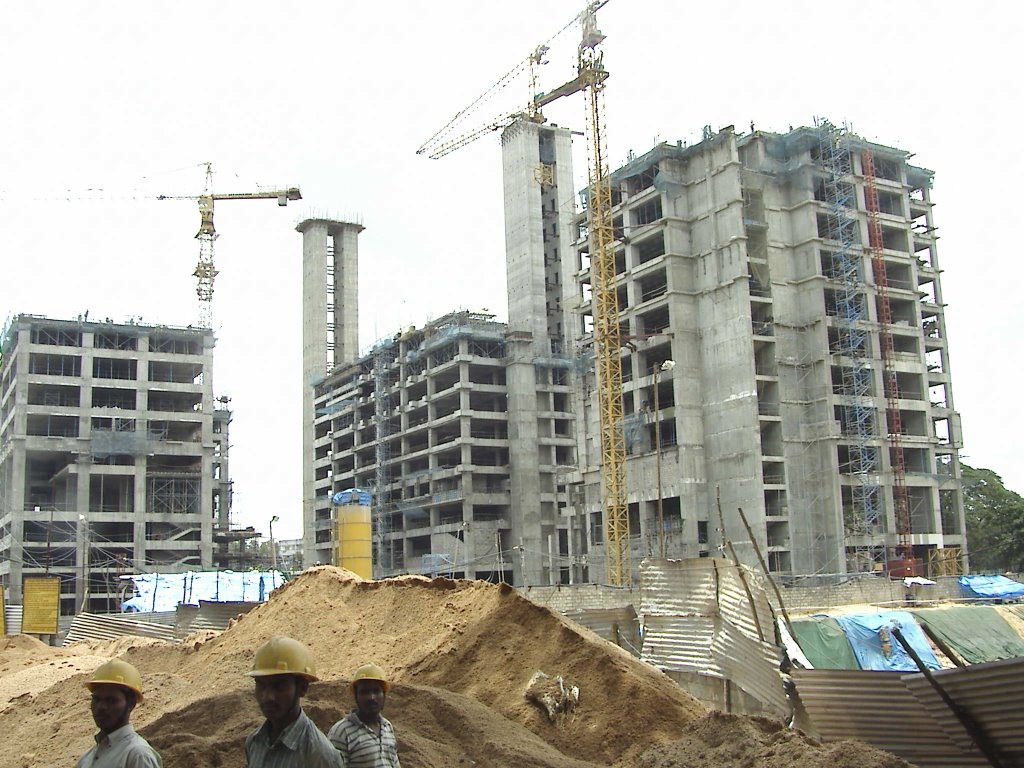
Demonetisation or notebandi was expected to push down real estate prices. Some experts had said that by March 2017 real estate prices would fall by 30 per cent. This was supposed to happen because after demonetisation, the cash needed to carry out the black part of the real estate transactions would not be available.
In India, a portion of most real estate transactions is almost always carried out in black. This involves the buyer paying the seller in cash. This essentially ensures that the buyer saves on paying stamp duty, whereas the seller saves on paying a capital gains tax.
With the cash needed to carry out a part of the real estate transaction in black not being available post demonetisation, prices would fall. Or so we were told. (To know my views on the issue, click here).
The question is have real estate prices fallen in the aftermath of demonetisation? The government seems to think so. Take the case of what the
Survey says about this issue: “[Real estate] prices declined, as wealth fell while cash shortages impeded transactions… Prices could fall further as investing undeclared income in real estate becomes more difficult.”
Sometime last week the chief economic adviser Arvind Subramanian said: “The aim of demonetisation, is in fact, to bring down real estate prices.” He also added: “Real estate on the other hand, you do see a dip in prices, in sales, in launches and of course, some of it may be adverse of the economy, but in the long run, some of that is also good, because in equilibrium, the aim of demonetisation, is in fact, to bring down real estate prices.”
The question is have real estate prices really fallen? Take a look at the following chart sourced from the latest Economic Survey, which Subramanian perhaps forgot to look at.

The chart essentially shows real estate launches, sales and price, over a period of time. If you look at the right-hand side of the chart, you can clearly see that the red and the blue curves have fallen at a very fast pace. This tells us that demonetisation has led to a huge slowdown in both real estate sales as well as launches.
If we look at the chart carefully, launches of new homes by builders, were down by 60 per cent by December 2016 (the end of the fourth quarter of 2016) in comparison to end 2015. The sales were down by around 40 per cent over a similar period. All of this was not because of demonetisation because both launches and sales were already falling even before demonetisation.
In comparison, the price curve just shows a small dip in the post demonetisation period, this despite the sales crashing. Also, the prices (like sales and new launches) had already been falling even before demonetisation.
So, what does all this tells us? It tells us that the contention of the Economic Survey and Arvind Subramanian of the real estate prices falling should be taken with a pinch of salt. In comparison to the fall in sales and new launches, real estate prices have barely moved.
It also tells us that the government should be carefully reading the documents that it puts out. In this case, the graph says one thing and the analysis accompanying it, says exactly the opposite thing.
So, what explains this phenomenon of falling sales and more or less flat prices? The Indian real estate scenario is always a little tricky to explain. In any other market, if sales had fallen by 40 per cent, the market would have crashed by now. So, what gives? There are no clear cut answers here but only speculative ones.
Most Indian real estate companies are fronts for the ill-gotten wealth of politicians. The builders who operate as fronts have promised a certain rate of return to politicians, and hence, are not able to cut prices. This is one possible explanation. Another explanation that keeps getting offered is the fact that the builders and politicians have made a lot of money over the years, and hence, are in no hurry to cut prices to sell the real estate inventory of homes that has been built up.
A third explanation offered is that banks which have lent money to the builders don’t want them to cut prices. A fourth explanation that was offered to me by a reader was that even though home-sales fell they did not fall by as much as they should have. What does this mean? It basically means that some of the smaller builders post demonetisation, have managed to sell some of their inventory to those who had black money in the form of high denomination notes of Rs 500 and Rs 1,000.
They took this money and used it to pay off their debt to their suppliers. The suppliers then used the money and paid it off to those who they owed money to. Essentially, the demonetised notes were paid down the chain, until they reached the workers who went ahead and deposited the money into their bank accounts. So, the world worked, and black money was converted into white.
I am sure there might be other explanations for this as well. But these are the explanations that I came across and have put them out. With very little data going around, Indian real estate, as always, remains very difficult to analyse.
The column originally appeared in Equitymaster on February 6, 2017